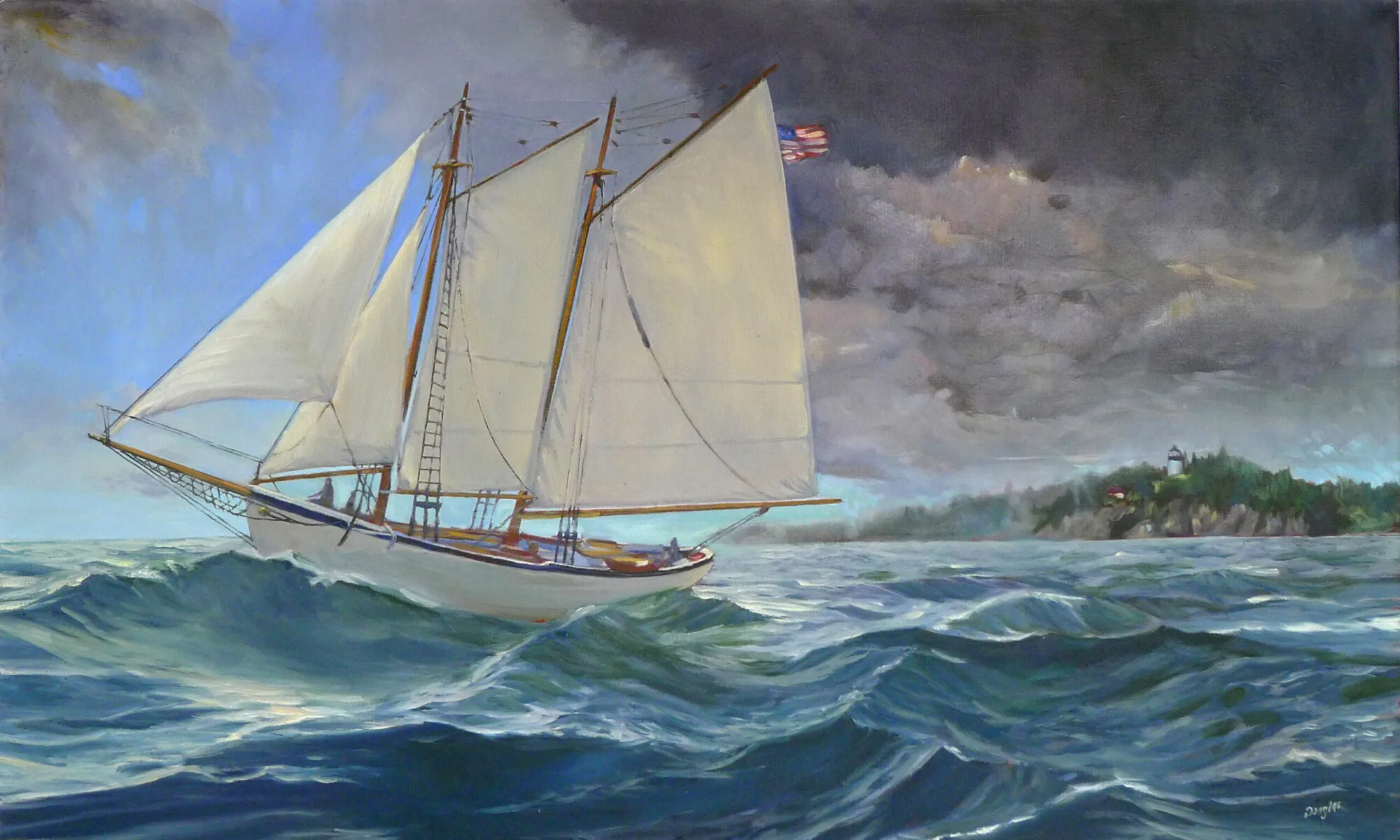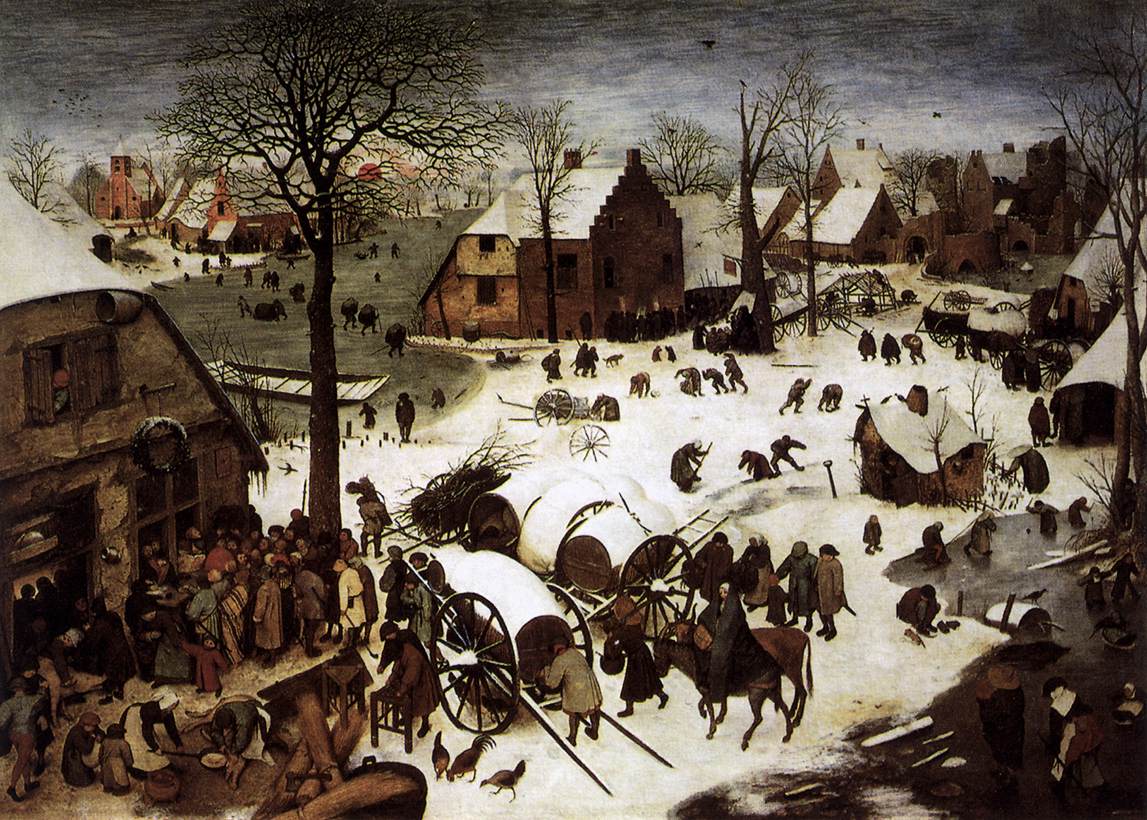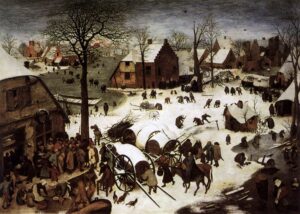
The number one question you must ask about your painting is: is it boring? If your painting is boring, nobody is going to engage with it.
One way to do keep things interesting is to manipulate where you put the subject of your painting. You don’t need to plop the subject in the center of your canvas and the subject does not necessarily have to be the focal point.
Consider Pieter Brueghel the Elder‘s masterpiece, The Census of Bethlehem, above. It’s unlikely that Brueghel consulted a text about composition, because those things didn’t exist back in the 16th century. He came up with this visual trick on his own and used it over and over.
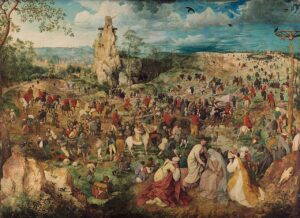
The subject is not in the middle of the canvas. Nor is it the focal point. In fact, the subject will only be clear to you if you know the Bible story about Mary and Joseph traveling to be counted in Bethlehem. Because of the overall energy of the canvas, you’re engaged enough to hunt for them, and to realize that Mary and Joseph are at the very bottom of the canvas, heading towards the census-taker at the bottom left.
That’s different from the focal points, which are within the swirl of activity that made up the daily life of a medieval village.
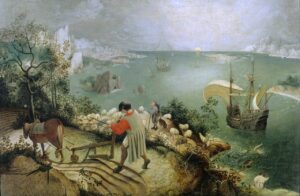
Brueghel often made the subjects of his painting seem like almost an afterthought to the big scene. Another great example of this is Landscape with the Fall of Icarus, about which William Carlos Williams wrote:
According to Brueghel
when Icarus fell
it was springa farmer was ploughing
his field
the whole pageantryof the year was
awake tingling
nearthe edge of the sea
concerned
with itselfsweating in the sun
that melted
the wings’ waxunsignificantly
off the coast
there wasa splash quite unnoticed
this was
Icarus drowning.
In that short poem, Williams says everything about Brueghel’s compositional technique.
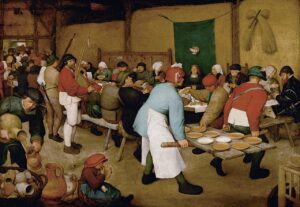
So, what’s the difference?
The focal point is a visual engagement, whereas the subject is what the painting is about. The subject of a painting can be a story or fable, as were Brueghel’s paintings. It can be an object or person. Or, in the case of abstraction, it can be nothing at all.
Focal points are something quite different. They are the points that your eye rests on at it moves through a painting.
What draws the human eye to a specific passage in a painting?
- Contrast in value, hue and chroma, with value being the biggest driver of the three. If you have a dark shape next to a light shape, the eye tends to look at that place.
- Detail. Assuming the whole painting is not overloaded with detail, if there’s a lot of detail in a passage, that is where the eye will go first.
- Line. Lines within the composition act like arrows, drawing your eye to the focal points.
Is there just one focal point in the painting?
I sure hope not, because your job as the composer is to get the human eye to dance its way through the composition, to engage the viewer for as long as you can keep them interested. The longer they spend looking at your picture, the more involved they become with it.
My 2024 workshops:
- Painting in Paradise: Rockport, ME, July 8-12, 2024.
- Sea & Sky at Schoodic, August 4-9, 2024.
- Find your authentic voice in plein air: Berkshires, August 12-16, 2024.
- Art and Adventure at Sea: Paint Aboard Schooner American Eagle, September 15-19, 2024.
- Immersive In-Person Workshop: Rockport, ME, October 7-11, 2024.
